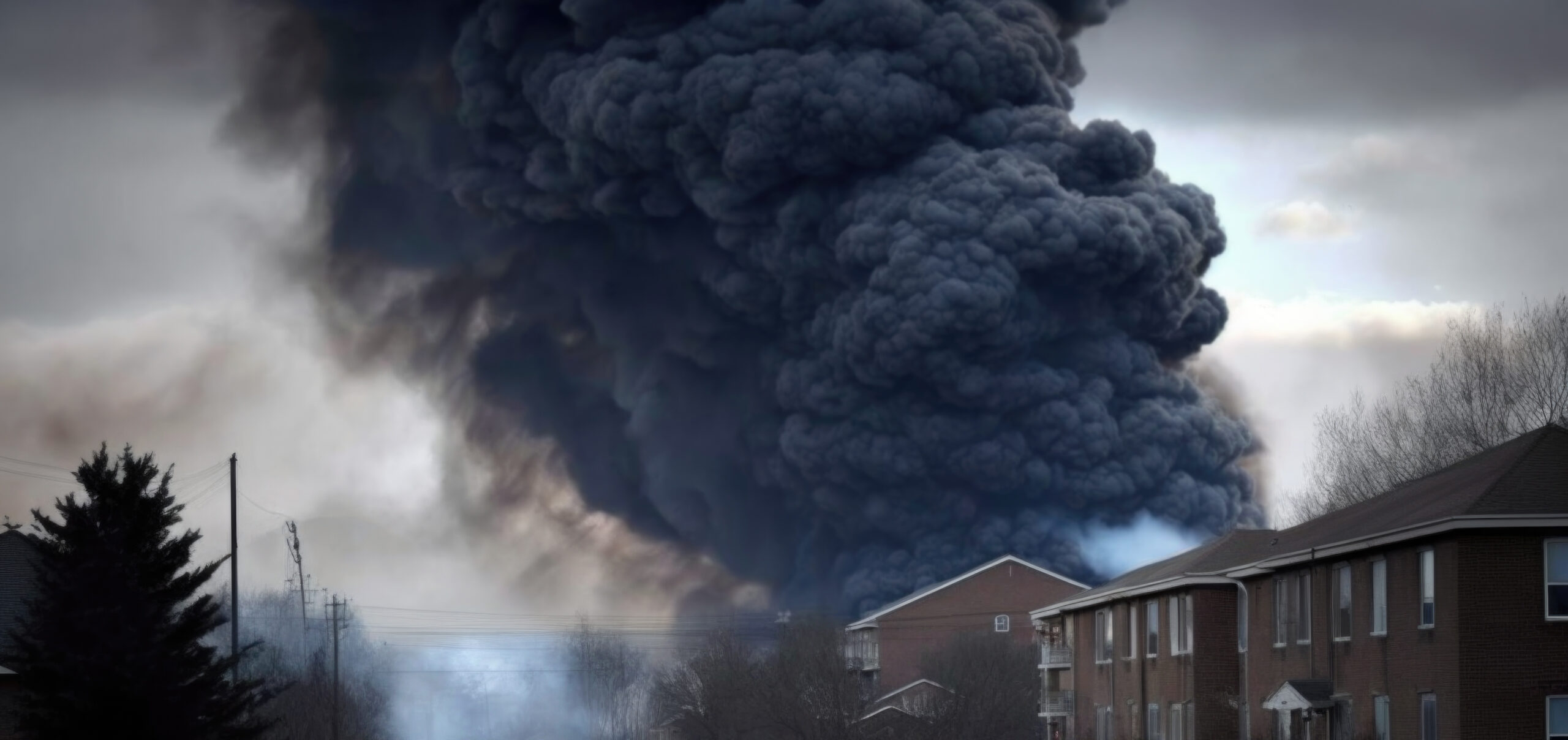
Ohio rail disaster fallout: How to respond to a toxic catastrophe near your workplace
March 1, 2023
By
Todd Humber

Smoke is seen pouring from the site of the train derailment in East Palestine, Ohio, Photo: Wide Awake/Adobe Stock
While the sight of the toxic plume emanating from the rail disaster in East Palestine, Ohio, was terrifying for local residents, some Canadians looked to the sky with a bit of consternation.
That’s because the Ohio town isn’t that far from areas in Ontario like the north shore of Lake Erie, the Niagara region and even Toronto.
But people in those regions can breathe a sigh of relief. Environment and Climate Change Canada said chemicals involved in controlled releases are typically in the atmosphere for less than 24 hours, and the wind patterns weren’t pushing this particular toxic cloud towards the border, it said.
Joe Fida, a partner and CIO of Blade — a Toronto-based company that specializes in indoor air quality — put it another way: “We got lucky.”
“The pollutants and toxins that were being released were either combusted or quite simply vaporized without combustion,” he said.

Joe Fida, partner and CIO, Blade.
Vinyl chloride was present in five of the 11 derailed train cars, but its half-life is about 24 to 48 hours when it’s airborne, said Fida, an expert who holds an undergraduate degree and a masters of applied science in chemical engineering.
“In saying that, though, when it combusts it can become quite a few different compounds that are also dangerous,” he said. “You can even generate trace amounts of phosgene, which was used as a chemical weapon.”
How it spreads: Like cream in coffee
But given the distance from the site of the disaster and the border, the risk to Canadians was relatively low, he said. Fida equated the way chemicals spread to what you see in your morning coffee when you pour in milk or cream.
“You see how it kind of goes out slowly, that’s what we’re seeing,” he said. “That’s what you’re seeing with the contaminants. The concentration will lower as they spread.”
According to Associated Press reports published in OHS Canada, residents are complaining of symptoms like headaches and irritated eyes. Cars and lawns are covered in soot, and thousands of fish have been found dead in local waterways.
What if it happened here?
The risk to the local community in Ohio from the Feb. 3 derailment is significant, he said. All that leads to questions around how employers should respond if a similar disaster happened in their community.
The obvious first step is to clear employees out of the danger area as quicky as possible.
“Providing the time was adequate, and they could make it home, you would send them home with instructions to seal all windows and doors,” he said.
They should also shut off their HVAC systems as well. The idea is trying to seal the house, or whatever building they’re in, as much as possible.
If, for some reason it’s not possible to evacuate, the same measures should be taken in the workplace.
“Your best bet is to seal the space that you are in and try not to contaminate it more,” he said. “Don’t smoke. Don’t light fires. Minimize the amount of generation of other contaminants.”
The reason for shutting down HVAC is that the system is bringing in “make-up air” from outside, which will bring in the toxic chemicals and distribute them around your home or workplace. Some systems allow for circulation with no make-up air, said Fida, simply recycling the existing air.
Those systems can be left on if they have filtration in place to remove the toxins of concern or on a necessity basis if pre-existing contaminants in the space are a concern. Otherwise, the circulation of air can increase the spread of the contamination, he said.
Then it’s a matter of listening to authorities and waiting for news on what to do next.
Dealing with persistent chemicals
Even when the disaster is over, the work isn’t done. There may be persistent chemicals that have gone through and leached into the soil or groundwater.
“One of the other things with toxic airborne events is that chemicals will go through what’s called deposition — where they will land. They can go through dry or wet, so they will come out of suspension in the air and they will deposit on the soil or they can come in snow or rain.”
That’s where filtration systems can come into play to help ensure that chemicals located outside the building are not making it inside, he said.
Not all disasters come from outside your facilities either, said Fida. Employers need to be familiar with their own MSDS sheets and be prepared to respond if an incident occurs.
“First, it can help prevent (a disaster) by putting correct measures in place. Second, if it does, you already have that correct filtration in place to mitigate that incident as well,” he said. “What’s that age old expression? An once of prevention is worth a pound of remediation.”